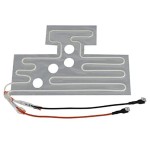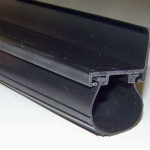Choosing the Right Size Spring for Your Garage Door
A garage door spring is a crucial component that counterbalances the weight of the door, making it easier to open and close. These springs are under immense pressure and can be dangerous if handled incorrectly. Therefore, selecting the right size spring is vital for safety and proper operation. Incorrect spring size can lead to various problems, including:
- Difficulty opening and closing the door
- Premature wear and tear on the door and opener
- Safety hazards due to sudden and uncontrolled door movement
This article will guide you through the process of determining the correct spring size for your garage door.
Understanding Garage Door Springs
Garage door springs are typically torsion springs, coiled and installed on a shaft above the door. They work by storing energy as the door is closed and then releasing that energy as the door is opened, counteracting the weight of the door. Springs are rated by their size and tension, with a higher tension indicating a stronger spring.
The size of a garage door spring is typically described by its diameter, wire thickness, and length. The diameter refers to the overall size of the spring coil. The wire thickness, measured in inches, indicates the thickness of the metal wire used to create the spring. The length of the spring, measured in inches, is the overall length of the spring coil. The combination of these factors determines the spring's tension and its ability to handle the weight of the door.
Factors to Consider When Determining Spring Size
Multiple factors determine the appropriate spring size for your garage door. These factors include:
- Door weight: The weight of the door is the most crucial factor. Heavier doors require stronger springs to counterbalance their weight.
- Door size: Larger doors, with greater surface area, generally weigh more, requiring larger springs.
- Door material: The material used for the door can influence its weight. For instance, a wooden door is lighter than a steel door of the same dimensions.
- Number of springs: Most garage doors have two torsion springs. However, larger or heavier doors may require more.
- Spring tension: Tension indicates how much force the spring exerts. This varies based on the door's weight and size.
Steps for Determining the Correct Spring Size
Determining the right spring size for your garage door involves several steps:
- Measure the door: Determine the width and height of the door, along with the number of sections.
- Determine the door material: Note whether the door is made of wood, steel, aluminum, or another material.
- Consult the door manufacturer: If the door is relatively new, you can consult the manufacturer's documentation for the recommended spring size and tension.
- Contact a professional: If you're unsure or the door is older, contact a qualified garage door technician. They can accurately assess your door's weight and recommend the proper spring size.
- Check the existing springs: If the springs are already installed, note their size and tension using markings on the spring itself or the accompanying documentation.
- Use a spring calculator: Several online calculators help determine the right spring size based on door dimensions, weight, and material.
Remember, attempting to replace or adjust garage door springs without proper knowledge and experience can be dangerous. Always prioritize safety and consult with qualified professionals for assistance.

0 225 Garage Door Torsion Springs Dura Lift Hardware

How To Choose The Right Garage Door Springs For Your Home Ogd

Dura Lift 100 Lb Heavy Duty Extension Garage Door Spring 2 Pack

Dura Lift Heavy Duty Extension Garage Door Spring 2 Pack 150 Lb

How To Choose The Right Garage Door Springs For Your Home Ogd

Garage Door Spring Size Chart Heritage

Dura Lift Garage Door Torsion Spring Right Wound 225 X 1 75 29
Garage Door Spring Size Chart Your Installation Guide 2024

How To Measure Garage Door Springs

How To Measure And Order Torsion Springs Ssc








